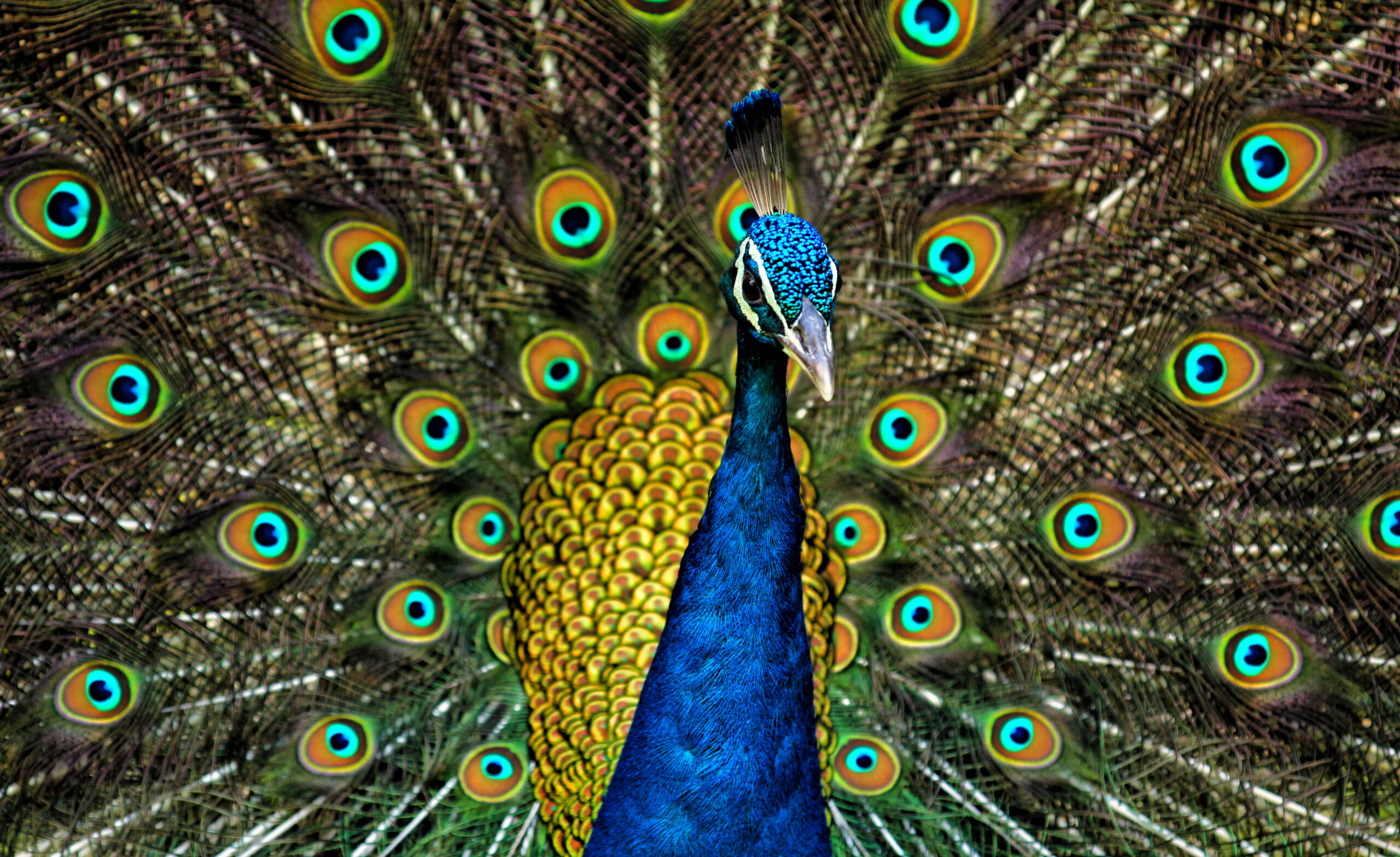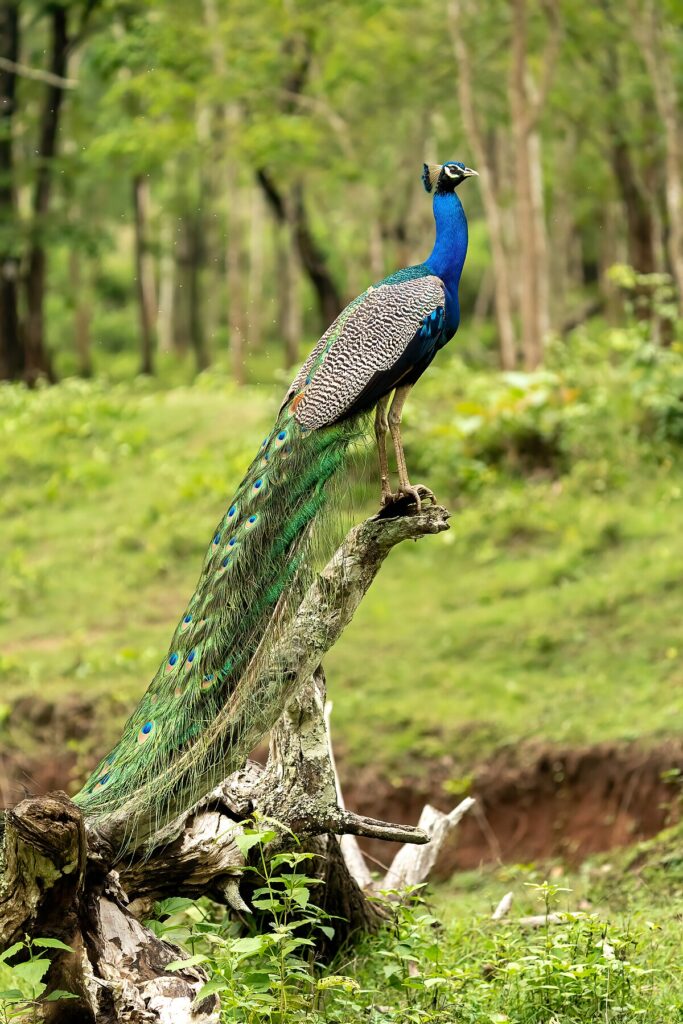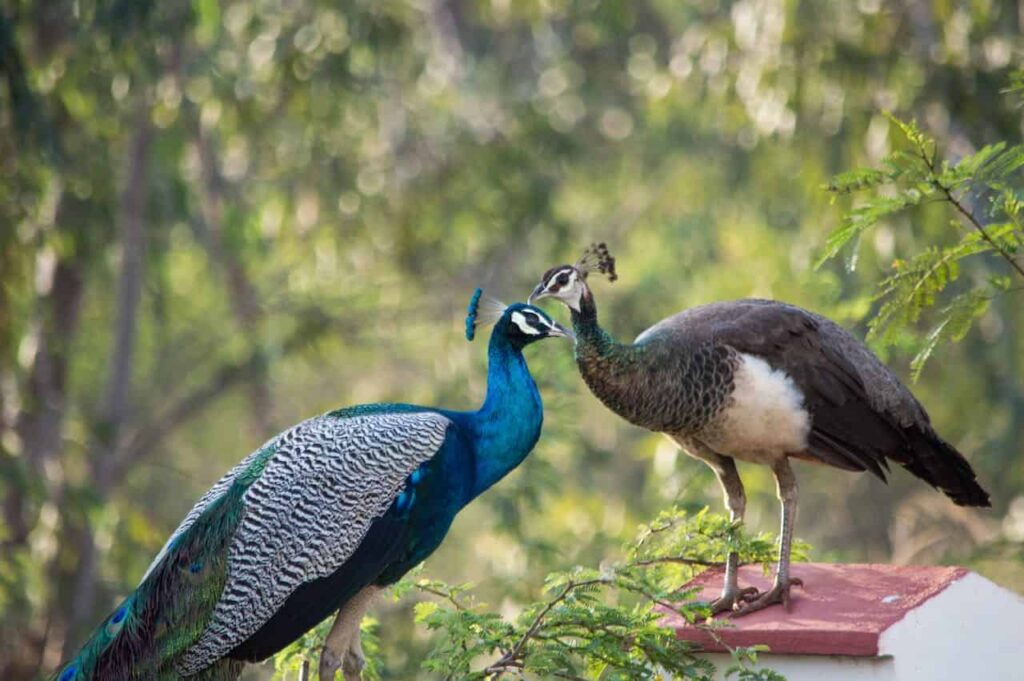The Lifespan of a Peacock

Peacocks—particularly the Indian Peafowl (Pavo cristatus)—are globally admired for their magnificent tail displays and symbolic meanings in art, mythology, and royalty. But beyond their showy plumage lies a fascinating biological journey. So, how long do these majestic birds actually live? And what affects their longevity in the wild and in captivity? Let’s dive deep into the lifespan and life cycle of the peacock, from hatching to its final days.
1. Average Lifespan of Peacocks
- In the wild:
Peacocks generally live 10 to 15 years in natural environments. - In captivity (zoos, sanctuaries, or private estates):
With protection from predators, consistent food, and veterinary care, peacocks can live up to 20–25 years, and in rare cases, even beyond 30 years.
This dramatic difference is largely due to factors like predation, disease, food availability, and weather conditions.
2. Life Stages of a Peacock
🐣 Hatchling / Chick (0–6 months):
- After an incubation period of 27–30 days, peahens (female peafowl) hatch a small clutch of 3 to 5 chicks.
- Chicks are precocial—they hatch with their eyes open and can walk and feed within hours.
- Their plumage is dull brown or yellowish, blending into their environment for camouflage.
🐥 Juvenile (6 months–2 years):
- Young males are called peacocks, and young females are peahens.
- Males begin to show signs of their iconic plumage around 1 year, though their tails won’t fully develop until they are 3 years old.
- During this stage, they learn social cues, establish hierarchies, and avoid predators.
🦚 Adult (2–10+ years):
- Peacocks reach sexual maturity by age 2–3.
- The full train of iridescent feathers appears by the third year.
- During the breeding season (spring/summer), males fan their elaborate tail feathers to court females with visual displays and loud calls.
- Mating occurs yearly, and peacocks may display for multiple peahens.
🪶 Elder (10–25 years):
- In protected environments, older peacocks gradually lose plumage brilliance and become less active.
- Their tail feathers still regenerate annually, but energy and mating competitiveness decline.
- With proper care, many peacocks in sanctuaries or royal estates live past 20 years.

3. What Affects a Peacock’s Lifespan?
✅ Positive Factors (Especially in Captivity):
- Veterinary care
- High-quality nutrition
- Safe environments (protected from predators and environmental extremes)
- Regular feather care and grooming opportunities
- Companionship and mental stimulation
⚠️ Risks in the Wild:
- Predators: Especially leopards, jackals, dogs, snakes, and large birds of prey.
- Habitat destruction: Deforestation and human encroachment reduce nesting and feeding grounds.
- Hunting and poaching: In some regions, peacocks are hunted for their feathers or meat.
- Disease: Parasitic infections or avian flu can reduce lifespan.
- Climate extremes: Drought, cold, or flooding impact survival rates.
4. Lifespan by Peacock Species
| Species | Wild Lifespan | Captive Lifespan | Native Regions |
|---|---|---|---|
| Indian Peafowl (Pavo cristatus) | 10–15 years | 20–25+ years | India, Sri Lanka, Pakistan |
| Green Peafowl (Pavo muticus) | 8–12 years | 15–20 years | Southeast Asia |
| Congo Peafowl (Afropavo congensis) | ~10 years | ~20 years | Congo Basin, Africa |
5. Cultural Importance & Symbolism of Longevity
Peacocks are revered in cultures around the world as symbols of immortality, beauty, resurrection, and nobility:
- In Hinduism, the peacock is associated with Lord Kartikeya and Saraswati.
- In Christianity, it has represented eternal life and the incorruptibility of the soul.
- In Persian and Greek art, it’s a sign of regal splendor and divine watchfulness.
Their long lifespan in royal gardens and temples contributed to their role as timeless guardians and sacred birds.

Conclusion: A Life as Grand as Its Feathers
While the peacock is often celebrated for its breathtaking beauty, its life story is equally fascinating. From humble hatchlings to flamboyant adult dancers, peacocks experience a journey shaped by nature, environment, and history. In the right conditions, these regal birds can enjoy decades of vibrant life, continuing to awe and inspire every generation.



